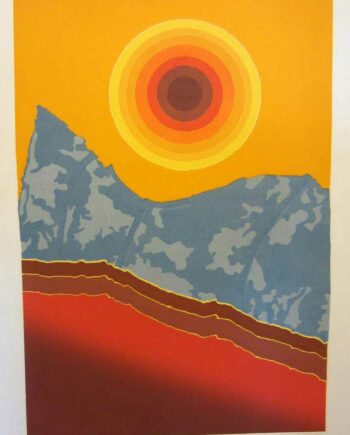Collagraph
A Collagraph is a basic method of printmaking using a board with collage materials glued onto it to form a relief surface with a variety of textures.
Collagraphs or Collagraphy (sometimes spelled collography) was introduced circa 1955 by Glen Alps and is a printmaking process in which materials are applied to a rigid substrate (such as paperboard or wood). The word is derived from the Greek word koll or kolla, meaning glue, and graph, meaning the activity of drawing.
The plate can be intaglio-inked, inked with a roller or paintbrush or some combination thereof. Ink or pigment is applied to the resulting collage and the board is used to print onto paper or another material using either a printing press or various hand tools. The resulting print is termed a collagraph. Substances such as carborundum, acrylic texture mediums, sandpapers, textiles, bubble wrap, string or other fibers, cut cards, leaves, and grass can all be used in creating the collagraph plate. In some instances, leaves can be used as a source of pigment by rubbing them onto the surface of the plate.
Many various tonal effects and vibrant colors can be achieved with the technique due to the depth of relief and differential inking that results from the collagraph plate’s highly textured surface. Collagraphy is a very open printmaking method. The ink may be applied to the upper surfaces of the plate with a brayer for a relief print, or ink may be applied to the entire board and then removed from the upper surfaces but remain in the spaces between objects, resulting in an intaglio print. A combination of both intaglio and relief methods may also be employed. A printing press may or may not be used.


